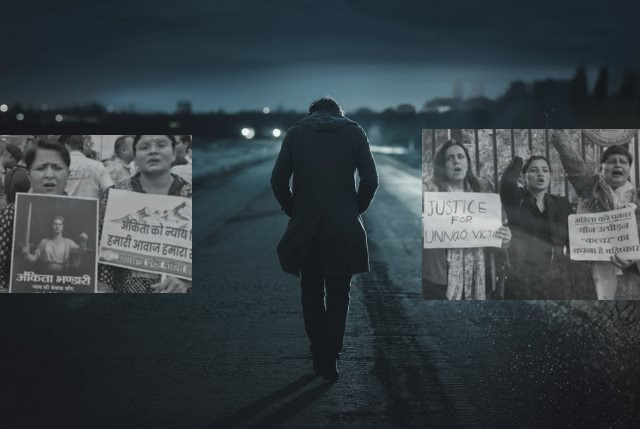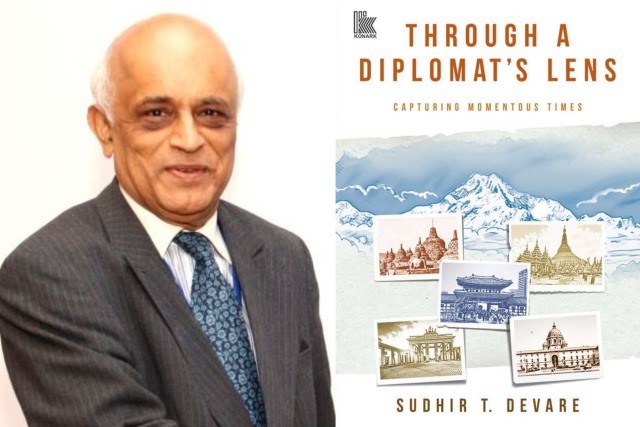Has the Indian Supreme Court Blurred Separation Of Powers?
The doctrine of the separation of powers requires that the three principal organs of State – that is the executive, the legislature and the judiciary – should be clearly divided in order to safeguard citizens’ liberties and to guard against governmental tyranny.
One of the earliest and clearest statements of the separation of powers was given by the infamous social commentator and political thinker Montesquieu at the beginning of the French Revolution in 1748:
‘When the legislative and executive powers are united in the same person, or in the same body of magistrates, there can be no liberty… there is no liberty if the powers of the judging is not separated from the legislative and executive… there would be an end to everything, if the same man or the same body… were to exercise those three powers.’
Therefore, according to the strict interpretation of the separation of powers, none of the three branches may exercise or interfere with the power of the other, nor should any person be a member of any two of the branches. For instance, only by creating three separate institutions is it possible to have a robust system of democratic checks and balances between them.
The Constitution of India does not expressly provide for the separation of powers. Unlike the Constitutions of the US and Australia. However, it still recognises and incorporates the doctrine of the separation of powers between the three principal organs of State. Therefore, whilst no formal or codified lines have been drawn between them, it is widely recognised and accepted that the doctrine of the separation of powers ‘runs through’ the Constitution of India.
Furthermore, there is often an overlap in the scope of the functions of the three branches. Primarily, owing to the parliamentary form of colonial Government in India. In other words, the dividing line between the executive and the legislature is naturally rather a fine one. Nevertheless, under India’s Constitution, the executive can legislate using:
The ordinance making powers of the President and the governors; and delegate executive legislation.
The legislature also exercises some form of control over the judiciary in that it can legislate on the Constitution itself, the jurisdiction and powers of the criminal and civil courts and it can also impeach judges when they are found to be acting or to have acted ultra vires (outside of their jurisdiction).
The judiciary has wide powers to review and strike down unconstitutional executive and legislative decisions and actions. However, the legislature can make such rulings ineffective by amending the law while staying within the constitutional limits. This concept is known as ‘legislative overruling’ and is a prime example of the inherent checks and balances under the Constitution which further strengthen the separation of powers in India.
Moreover and despite the fact that the three branches interconnect and have functional overlaps, the Indian judiciary has recognised the doctrine of the separation of powers as a fundamental feature of the Indian Constitution and an essential principle underpinning the rule of law.
ALSO READ: Are The Farm Laws Legal?
During the course of a recent hearing relating to the Three Farm Laws, the Indian Supreme Court reportedly observed that it has the jurisdiction to stay the implementation of parliamentary legislation and did in fact go on to direct an interim order to that effect. In other words, a judicial order that prevents the executive or the legislature from implementing the Three Farm Laws into India’s domestic legislation.
However, this decision was taken despite the Supreme Courts own reasoning or judicial guidance laid down in the landmark case of Divisional Manager Aravali Golf Course v Chander Haas 2007. In which it was stated:
‘Before parting with this case we would like to make some observations about the limits of the powers of the judiciary. We are compelled to make these observations because we are repeatedly coming across cases where Judges are unjustifiably trying to perform executive or legislative functions. In our opinion this is clearly unconstitutional. In the name of judicial activism Judges cannot cross their limits and try to take over functions which belong to another organ of the State.
Therefore, the Supreme Court has specifically stated that judges must exercise judicial restraint and must not encroach on the jurisdictional capabilities or legislative actions of the legislature or the executive. In other words, the Supreme Court has previously declared that there is a broad separation of powers in India’s Constitution and that each primary organ of the State must remain within its limits and not intrude on the domain or jurisdiction of another.
Therefore, it follows that when the Indian Parliament enacted the Three Farm Laws in September 2020 Parliament was and remains the only organ of State who could repeal the laws or suspend their operation by enacting alternative legislative provisions. However and as previously mentioned, the Supreme Court can declare parliamentary legislation ultra vires if it finds it to be unconstitutional, but it has no jurisdiction to temporarily stay its enforcement without recording a judicial finding that it is on prima facie examination (at first glance) unconstitutional . Therefore, as no such finding has been made in the case in hand, this action cannot be said to amount to anything less than either a monumental demonstration of support on behalf of the judiciary for the plight of India’s small farmers, or a wholly unconstitutional and undemocratic judicial act which in turn should be immediately redressed.
Nevertheless, another fault line that could emerge from the Supreme Court’s intervention stems from the appointment of a four member committee headed by a retired Supreme Court judge ‘for the purpose of listening to the grievances of the farmers and the views of the government and to make recommendations’. However, the Supreme Court has previously set up similar committees, delegating some of its powers to committee members to implement or oversee specific laws or an order of the court. For instance, in 2017 the Supreme Court directed the establishment of family welfare committees whose mandate would be to assess complaints of domestic violence before they were investigated by the police. However, this decision attracted widespread criticism and was eventually rolled back. Nevertheless, a committee working to alleviate the pressures and restraints on India’s police force is one thing but a committee recommending whether three pieces of primary legislation must be stayed or repealed is another thing entirely and caution must be paid to the unconstitutionality of it all.
ALSO READ: International Implications Of India’s Farm Laws
For instance, whilst the Supreme Court’s decision clearly reflects the legitimacy of the ongoing farmer protests – the Supreme Court would not have issued an interim order if it considered the farmers legal case against the Government to be wholly without merit. If appropriate caution is not exercised by the Supreme Court Judges this judicial decision could have far reaching negative implications for India’s future democratic governance and the rule of law. In other words, public confidence in the judiciary and in the Government is inevitably going to be affected as India’s population begins to lose faith in the sanctity of Parliaments legislative authority.
Perhaps the Supreme Courts objective was to break the ongoing deadlock between the farmers and the Government. For instance, do not forget that prior to the week commencing the 01 December 2020 PM Narendra Modi and his majority government had failed or refused to consult or to negotiate with the farmers and the farmer leaders – a decision which in itself amounts to a clear violation of Articles 2, 10, 11 and 15 of the United Nations Declaration on the Rights of Peasants and Other People Working in Rural Areas 73/165 (UNDROP) (of which India is signatory) and various other primary instruments of international law. For more information on this point please see Sikh Human Rights Group working paper entitled Applicable International Treaties, Conventions and Regulations Re: India’s Agricultural Crisis.
Nevertheless, Sikh Human Rights Group respectfully submits that the Supreme Court judges must quickly come to the realisation that the judiciary cannot single headedly resolve the issues surrounding the Three Farm Law and must concurrently declare the Three Farm Laws unconstitutional whilst refraining from trespassing on the inherent jurisdiction of the legislature and the executive.
For instance, according the Articles 253 and 254 of the Constitution, the power to ratify international Treaties and Conventions is vested with the Government (executive) and there is no need to place the Treaty or Convention before Parliament (legislature) even if the Treaty or Convention has monetary obligations. Therefore, international intergovernmental agreements to uphold the provisions of specific international Treaties and Conventions, such as the UNDROP, are actionable or the provisions are actionable in India’s domestic courts without express Parliamentary legislation to that effect.
Therefore, as Article 9(3) of the UNDROP provides that:
‘States shall take appropriate measures to encourage the establishment of organizations of peasants and other people working in rural areas, including unions, cooperatives or other organizations, particularly with a view to eliminating obstacles to their establishment, growth and pursuit of lawful activities, including any legislative or administrative discrimination against such organizations and their members, and provide them with support to strengthen their position when negotiating contractual arrangements in order to ensure that conditions and prices are fair and stable and do not violate their rights to dignity and to a decent life’.
In SHRG opinion this provision clearly provides the Supreme Court with legitimate grounds to declare the Three Farm Laws ‘unconstitutional’ as Article 21 of the Constitution specifically states that ‘no person shall be deprived of his life or personal liberty’.Which in turn has previously been held by the Supreme Court to encompass a constitutional right to earn a livelihood or a decent standard of living. For example, in the case of Olga Tellis v Bombay Municipal Corporation (1986) it was stated by the presiding Supreme Court judges that:
‘The question which we have to consider is whether the [constitutional] right to life includes the right to livelihood. We see only one answer to that question, namely, that it does. The sweep of the right to life conferred by Article 21 [of the Constitution] is wide and far-reaching. It does not mean, merely that life cannot be extinguished or taken away as, for example, by the imposition and execution of the death sentence… That is but one aspect of the right to life an equally important facet of that right is the right to livelihood because, no person can live without the means of living, that is, the means of livelihood’.
By Mr Carlos Arbuthnott
(The writer is a Master of Laws in international human rights and Human Rights Officer with the Sikh Human Rights Group. Views expressed are personal)



